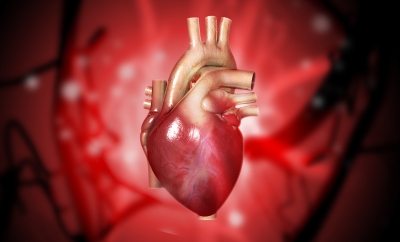The Heart and Bones Connection
The Heart and Bones Connection

Image courtesy of dream designs at FreeDigitalPhotos.net
Research over the past decade has uncovered a curious connection: Women who have coronary heart disease have more osteoporosis (loss of mineral content of the bones). Women who have osteoporosis are more likely to have coronary heart disease. Surely, two body systems couldn’t appear any farther apart. Why would two such seemingly unconnected body systems as the heart and the bones be so closely connected?
On the surface, they do share a few common features. Both conditions develop as we age. Both conditions are rare before age 30, but are common in the sixth or seventh decade of life. Both conditions don’t develop overnight, but require many years to develop. Just as osteoporosis doesn’t spring up on the eve of a hip fracture, but requires decades to develop, coronary atherosclerosis accumulates gradually over decades, starting in a person’s 20s.
But the connection goes deeper. The link between coronary disease and bone health may be due to the shared effects of several important nutrients:
Vitamin D-If vitamin D is deficient, intestinal calcium absorption from food is poor. The body then increases its output of the hormone, parathyroid hormone (PTH), that pulls calcium from bone instead. Over the years, this leads to osteopenia and osteoporosis, both representing progressive degrees of demineralization, or calcium loss from bone.
Vitamin D deficiency also escalates several coronary risk factors, including heightened inflammation (higher c-reactive protein), reduced HDL cholesterol, and higher triglycerides. Blood pressure is higher and poor responsiveness to insulin leads to higher blood sugar. All culminate in development of coronary atherosclerotic plaque.
Vitamin K2- Deficiency of vitamin K2 permits a protein, osteocalcin, to extract calcium from bone tissue, leading to osteoporosis; administration of vitamin K2 increases bone mass and calcium content, as well as reduces fracture. A similar protein in vascular (blood vessel) tissue, matrix Gla-protein (MGP), deposits calcium into plaque when K2 levels are low. People with coronary disease who are more likely to have higher heart scan (calcium) scores, and greater likelihood of heart attack.
Magnesium-A mini-epidemic of magnesium deficiency due to intensive municipal water treatment efforts, as well as use of bottled water, leads to bone that is weaker, since calcium deposition in bone is dependent on magnesium.
Magnesium also plays a broad role in heart health. When deficient, insulin responses are disturbed, permitting higher or erratic blood sugar, higher triglycerides, lower HDL cholesterol. If allowed to progress, magnesium deficiency can even result in abnormal heart rhythms from the common, like atrial
fibrillation, to dangerous rhythms like ventricular arrhythmias that can even be fatal.
The lesson: Because of the fascinating nutritional connections between the two conditions, attention to heart health can help maintain bone health; attention to bone health can help maintain heart health. In particular, minding healthy vitamin D, vitamin K2, and magnesium levels can help both heart and bone considerably.



